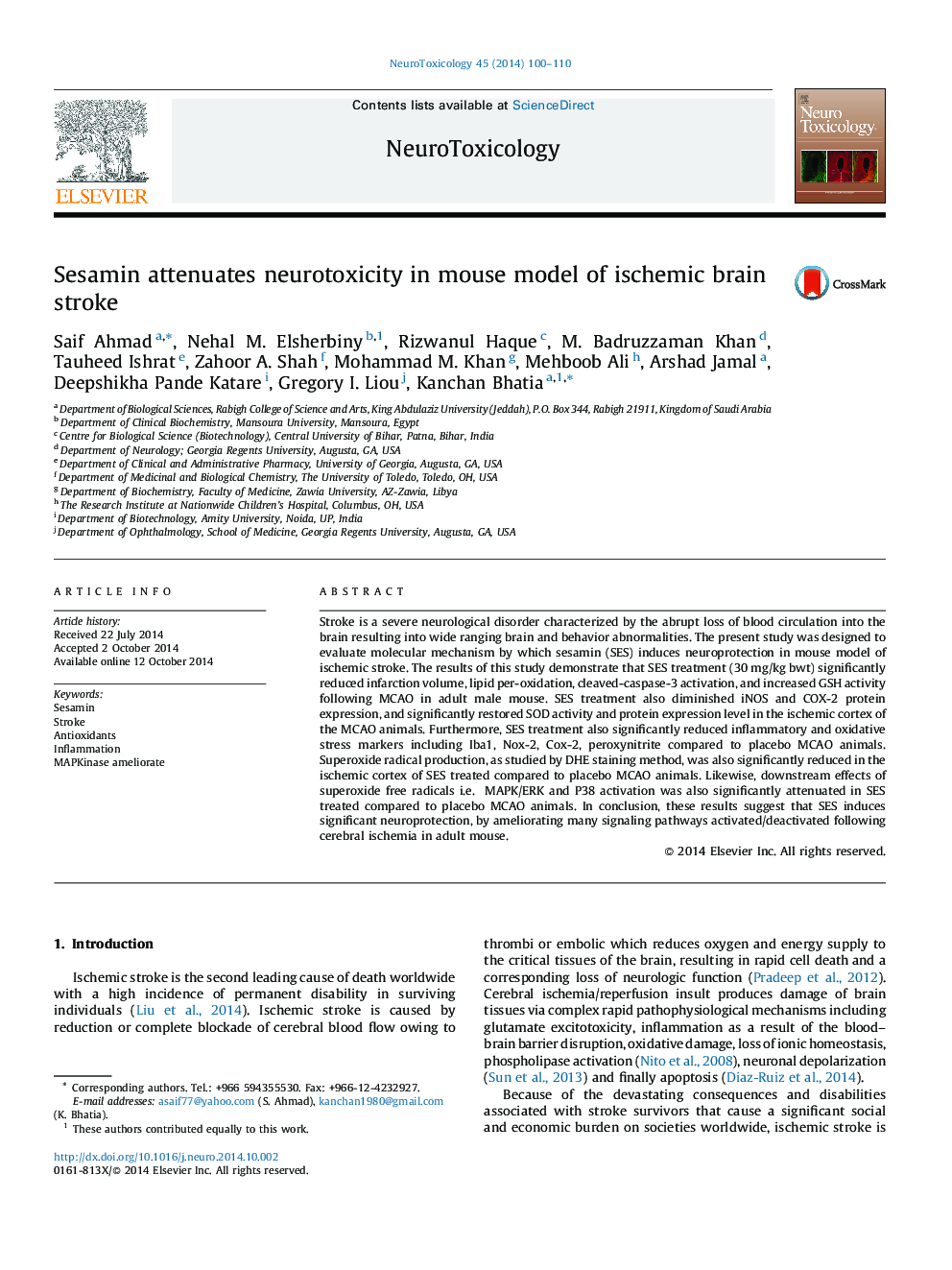| Article ID | Journal | Published Year | Pages | File Type |
|---|---|---|---|---|
| 5854880 | NeuroToxicology | 2014 | 11 Pages |
â¢Anti-inflammatory and antioxidant role of sesamin evaluated in nurotoxicity induced by ischemic brain stroke.â¢Sesamin reduces activated inflammatory and oxidative stress mechanism in mouse model of stroke.â¢Sesamin treatment showed inhibition of microglia, cleaved caspase-3, iNOS, Nox-2, Cox-2 and MAPKinase activation.â¢Sesamin significantly attenuated inflammatory gene expression level in stroke.
Stroke is a severe neurological disorder characterized by the abrupt loss of blood circulation into the brain resulting into wide ranging brain and behavior abnormalities. The present study was designed to evaluate molecular mechanism by which sesamin (SES) induces neuroprotection in mouse model of ischemic stroke. The results of this study demonstrate that SES treatment (30 mg/kg bwt) significantly reduced infarction volume, lipid per-oxidation, cleaved-caspase-3 activation, and increased GSH activity following MCAO in adult male mouse. SES treatment also diminished iNOS and COX-2 protein expression, and significantly restored SOD activity and protein expression level in the ischemic cortex of the MCAO animals. Furthermore, SES treatment also significantly reduced inflammatory and oxidative stress markers including Iba1, Nox-2, Cox-2, peroxynitrite compared to placebo MCAO animals. Superoxide radical production, as studied by DHE staining method, was also significantly reduced in the ischemic cortex of SES treated compared to placebo MCAO animals. Likewise, downstream effects of superoxide free radicals i.e. MAPK/ERK and P38 activation was also significantly attenuated in SES treated compared to placebo MCAO animals. In conclusion, these results suggest that SES induces significant neuroprotection, by ameliorating many signaling pathways activated/deactivated following cerebral ischemia in adult mouse.
